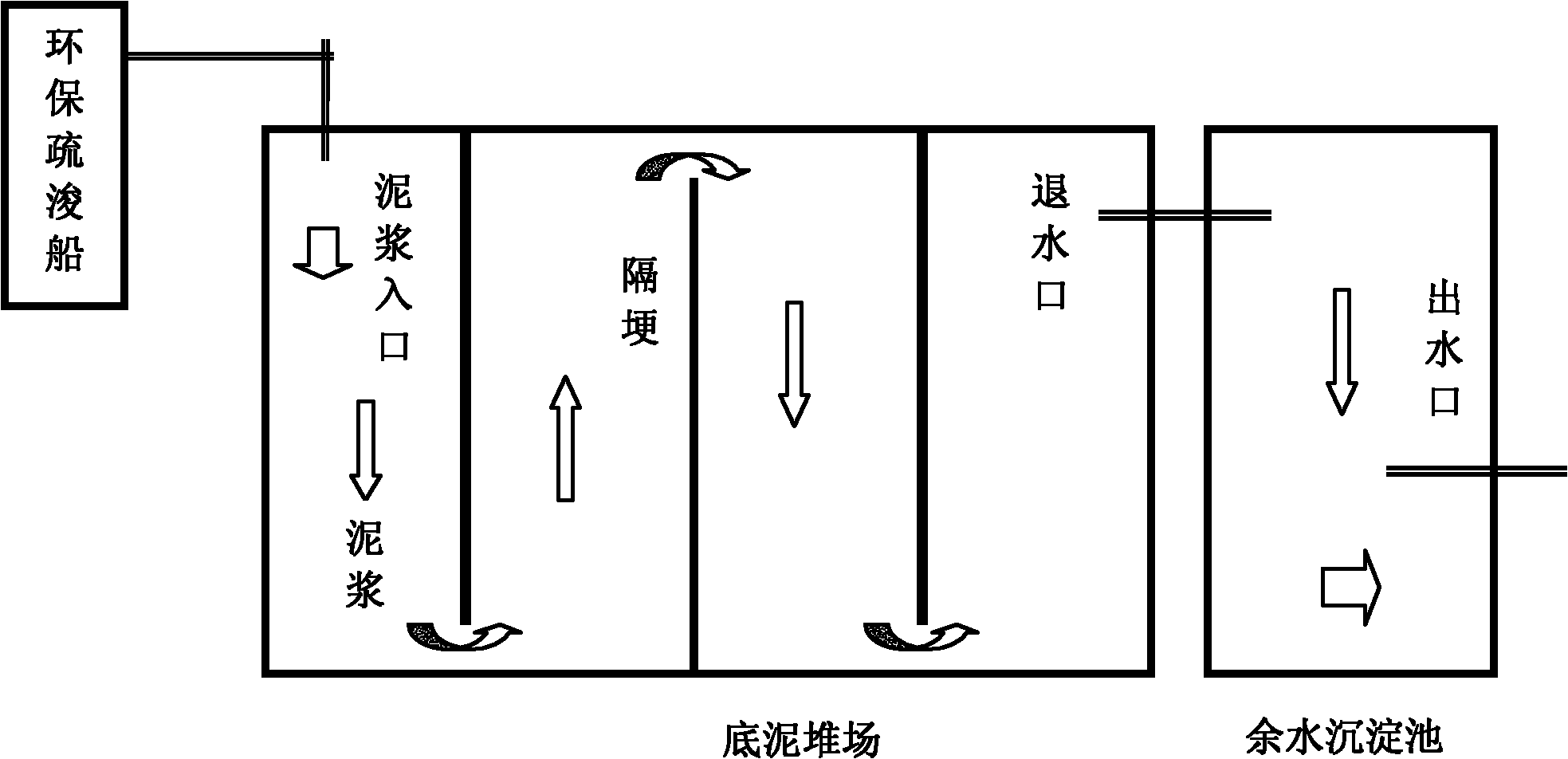Technique for treating remaining water of desilted sediment in Lake Tai
A technology for water treatment and sediment, which is used in flocculation/sedimentation water/sewage treatment, dehydration/drying/concentrated sludge treatment, etc. It can solve the problems of little research on residual water treatment, secondary pollution, and high moisture content of Taihu silt. , to achieve high-efficiency residual water treatment, reduce dosage, and produce less excess sludge.
- Summary
- Abstract
- Description
- Claims
- Application Information
AI Technical Summary
Problems solved by technology
Method used
Image
Examples
Embodiment 1
[0017] The mud cleared from the dredging device such as dredger or dredger is discharged into the mud discharge yard from the mud outlet through its mud outlet. The remaining water flows and enriches to the water outlet of the mud discharge field. After adding the compound flocculant at the water outlet, the remaining water is discharged into the residual water sedimentation tank for sedimentation treatment. The settled water is directly discharged or other post-treatment . Example 1: Zhushan Lake Experimental Project No. 1 Storage Yard Treatment System
[0018] The elevation of the cofferdam crest of the No. 1 sediment dump of the Zhushan Lake Test Project is 6.2m, and the elevation of the mud pile in the sludge discharge area of the sludge discharge yard is not higher than 5.2m. The cofferdam is located on the farmland inside the fish pond, and the average elevation of the farmland is about 4.2m. Therefore, the average height of the cofferdam in the mud discharge area is ...
Embodiment 2
[0021] Example 2: No. 1 storage yard treatment system of Meiliang Lake Experimental Project
[0022] The elevation of the cofferdam crest of No. 1 sediment storage yard of the Meiliang Lake Test Project is 6.5m, and the elevation of the mud pile in the mud discharge area is not higher than 5.5m. The cofferdam is located on the farmland inside the fish pond, the average elevation of the farmland is about 4.3m, the average height of the cofferdam in the mud discharge area is about 2.1m, and the elevation of the residual water sedimentation tank is about 5.5m. The top width of the cofferdam is taken as 2.0m, and the inner and outer slopes are both 1:2. Set up a 0.6m wide intercepting ditch at the foot of the outer slope of the cofferdam, excavate the soil for the intercepting ditch and build a filling ridge outside the ditch to prevent the water in the ditch from overflowing into the farmland. After natural sedimentation in the sludge discharge field, the residual water of the slu...
PUM
 Login to View More
Login to View More Abstract
Description
Claims
Application Information
 Login to View More
Login to View More - R&D
- Intellectual Property
- Life Sciences
- Materials
- Tech Scout
- Unparalleled Data Quality
- Higher Quality Content
- 60% Fewer Hallucinations
Browse by: Latest US Patents, China's latest patents, Technical Efficacy Thesaurus, Application Domain, Technology Topic, Popular Technical Reports.
© 2025 PatSnap. All rights reserved.Legal|Privacy policy|Modern Slavery Act Transparency Statement|Sitemap|About US| Contact US: help@patsnap.com



